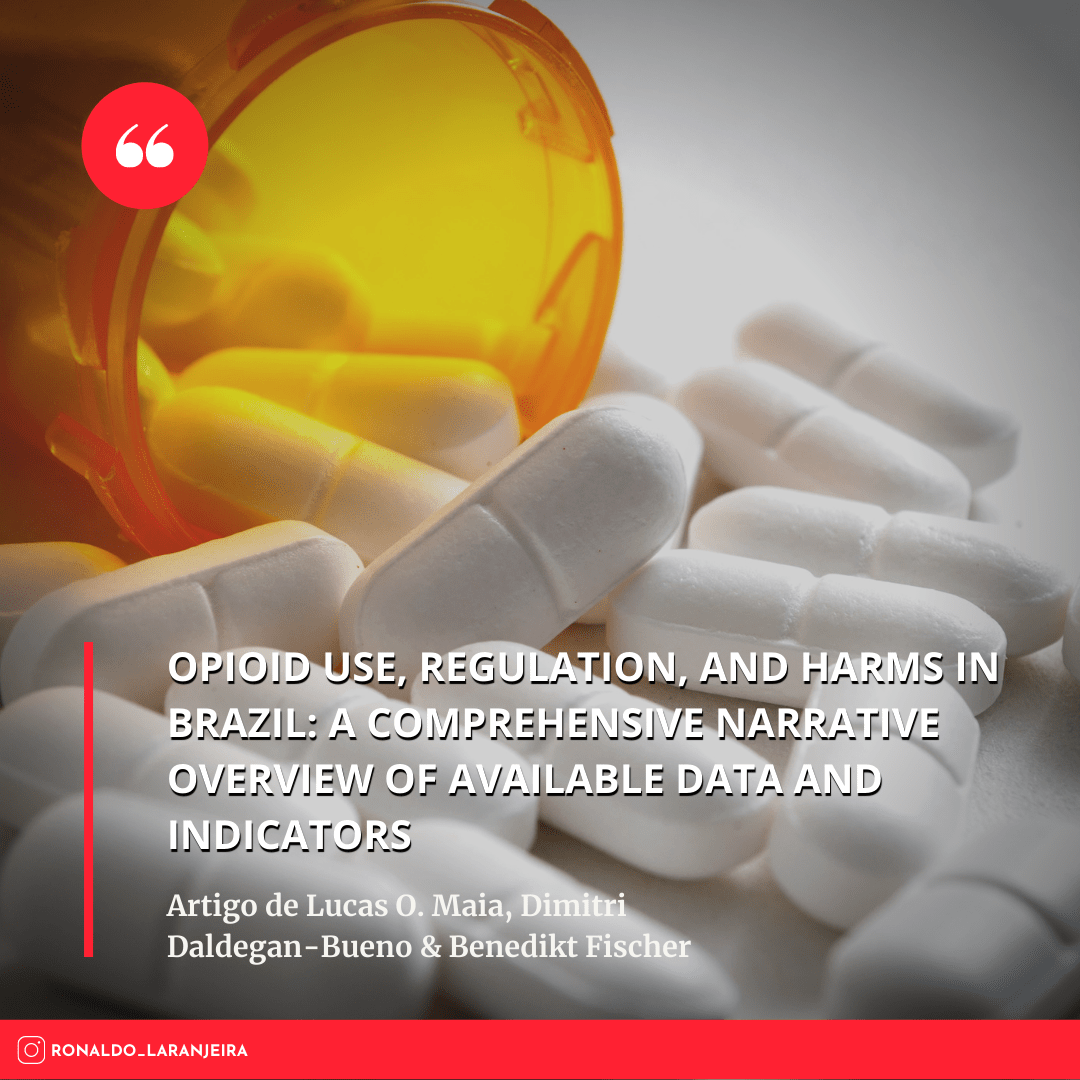Opioid use, regulation, and harms in Brazil: a comprehensive narrative overview of available data and indicators

The worldwide use of opioids has substantially increased post-2000. Based on International Narcotics Control Board (INCB) data, global consumption of opioid analgesics (in defined daily doses for statistical purposes [S-DDD] per million inhabitants per day) has risen by 250 %, from approximately 5 million S-DDD in 2000 to approximately 13 million S-DDD in 2014, yet has plateaued since [1]. The global prevalence of non-medical opioid use among persons aged 15–64 was estimated to have increased from 0.7 % (approximately 35 million people) in 2015 to 1.2 % (approximately 58 million) in 2018 [2, 3]. The majority (80–90 %) of global opioid consumption, and recent related increases, have been concentrated in high-income regions of North America, Western/Central Europe, and Oceania [1, 4]. Globally, a total of 109,500 opioid-related deaths were estimated for 2019 [5].
The highest consumption of opioids occurs in North America (e.g., the United States and Canada), where opioid availability exponentially increased, reaching the highest levels globally (~ 31,000 S-DDD) by the period 2011-13 [4, 5]. More recently – following the implementation of system-level restrictions (e.g., opioid restrictions, prescription monitoring and guidelines, enforcement) – opioid consumption levels have inverted and decreased by 20–50 % in North America from peak levels until 2018 [6–8]. Yet, in 2016-18, North America alone still accounted for about 60 % of the world’s total opioid consumption [1]. Post-2000, and fueled by the persistently high opioid availability described, North America has experienced steep increases in population-level opioid-related harms, including opioid-related morbidity and mortality (e.g., acute poisoning deaths) [9–11]. For example, a total of 47,600 opioid-related deaths occurred in the United States in 2018, with proportionally similar rates, and a total of 4,398 opioid-related deaths in Canada [12–14]. However, following policy restrictions and availability reductions, mortality resulting from prescribed opioids has steadily decreased. Additionally, there have been recent increases (60–80 %) in illicit/synthetic opioid use (e.g., fentanyl, heroin) over time, substantially driving opioid-related mortality [10, 15, 16]. In North America, high levels of opioid-related deaths negatively impact life expectancy in the general population [17–20].
Read the full article: http://bit.ly/3azdFd2

